by Contributed | Sep 30, 2020 | Azure, Technology, Uncategorized
This article is contributed. See the original author and article here.
Initial Update: Thursday, 01 October 2020 01:47 UTC
We are aware of issues within Log Analytics and are actively investigating. Some customers in West Central US, Australia south East regions may experience issues with Data Latency in AzureDiagnostics and AzureMetrics which may cause misfiring of alerts.
-
Work Around: none
-
Next Update: Before 10/01 04:00 UTC
We are working hard to resolve this issue and apologize for any inconvenience.
-Vincent
by Contributed | Sep 30, 2020 | Azure, Technology, Uncategorized
This article is contributed. See the original author and article here.
Hello Everyone!
We are exploring to provide a seamless integration with your EDU systems! If you currently use any Learning Management System (LMS), we would love to talk to you.
Please complete this 3 minute survey so we can better understand your context. Don’t forget to leave your email at the end of the survey (optional) if you want to be contacted by us to talk about the new features.
https://microsoft.qualtrics.com/jfe/form/SV_eu6fjkSPOHV4Ld3
Your feedback will be extremely helpful for us and will influence future improvements to the service.
Thank you,
Sagar Lankala
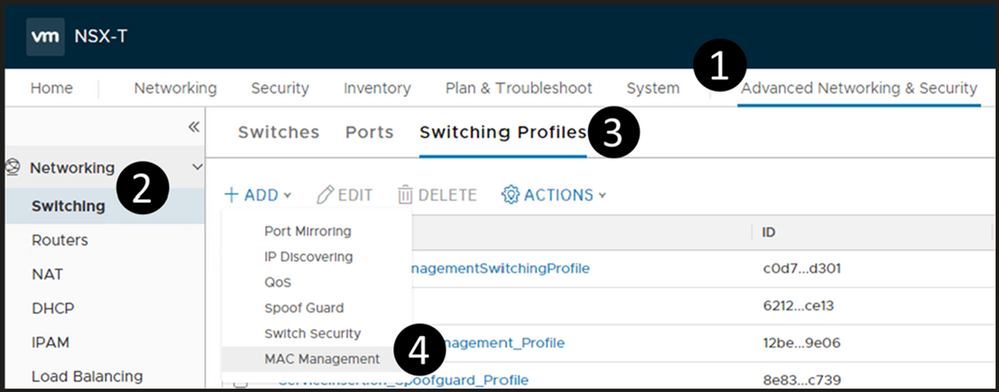
by Contributed | Sep 30, 2020 | Azure, Technology, Uncategorized
This article is contributed. See the original author and article here.
Nested ESXi is very useful for multiple reasons, can’t even begin to guess how many times I’ve done this and been able to demo something, test something, etc.. But keep in mind this is not supported by VMware, see this VMware KB article for the specific details. The supportability from VMware aside, nested ESXi works just fine and you can do this on Azure VMware Solution with relative ease… doesn’t get much better!! So let’s begin.
Segment Profile Creation
Log into your NSX manager in Azure VMware Solution and navigate your way to MAC Management as shown below.
Create a new MAC Management profile. Make sure you configure it as outlined below. Of course, you can choose whatever name you would like.
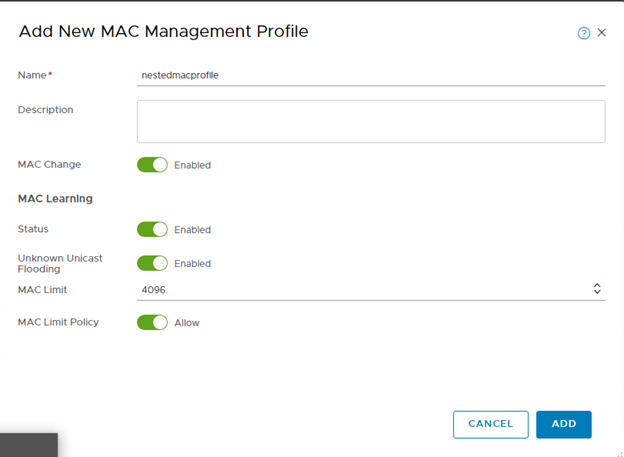
Deploy a Segment
The segment will be the network segment where you will have your ESXi vNIC(s) attached. You can have one segment or multiple, the critical thing here is for every segment created, create it as shown below.
Do steps 1-3 (DO NOT DO STEP 4 YET), then fill in as shown here, name it whatever you like. DO NOT Save.

Now, select Set Subnets (#4 from above)
Define whatever subnet you would like, you should end up with a screen as shown below. Then Apply.
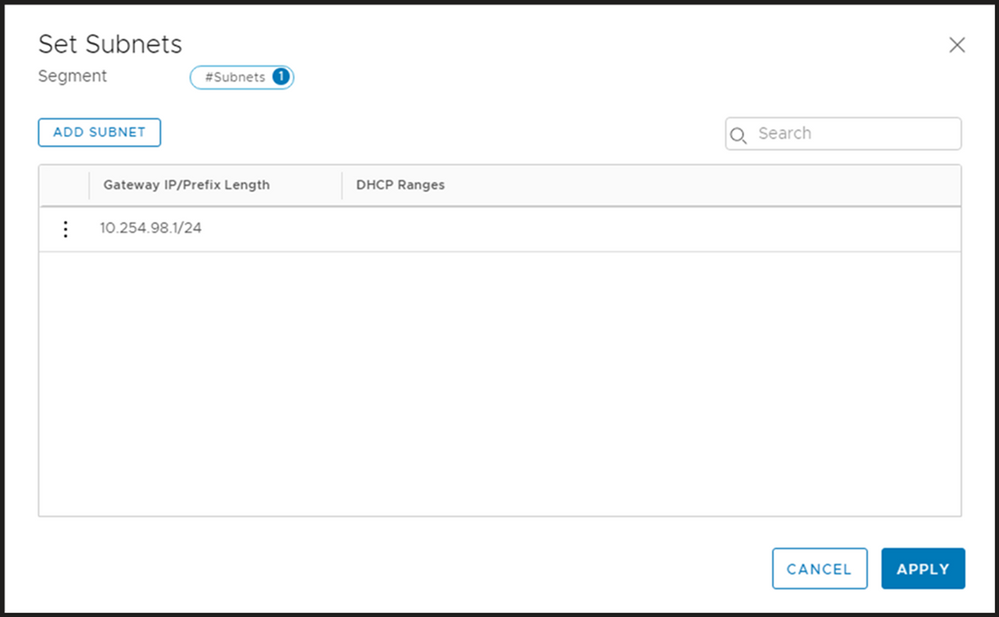
Your screen should look like the picture below, if it does, then choose Save.

You should now be prompted as shown below, choose YES.
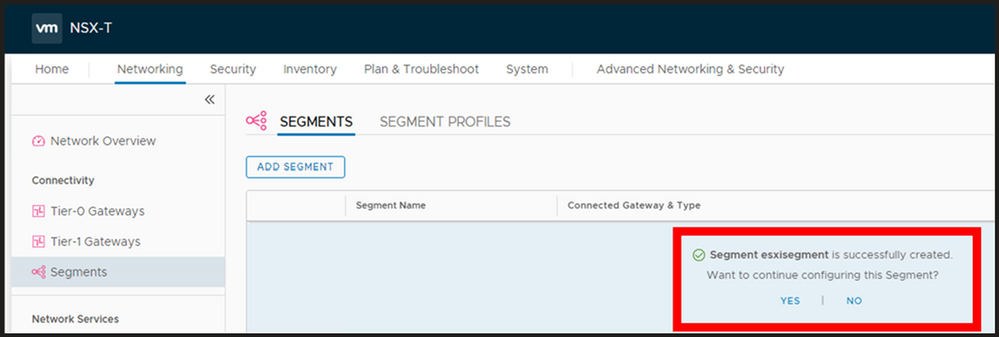
Now expand the segment profile section and change the MAC Discovery segment profile to the one which you just created and Save.
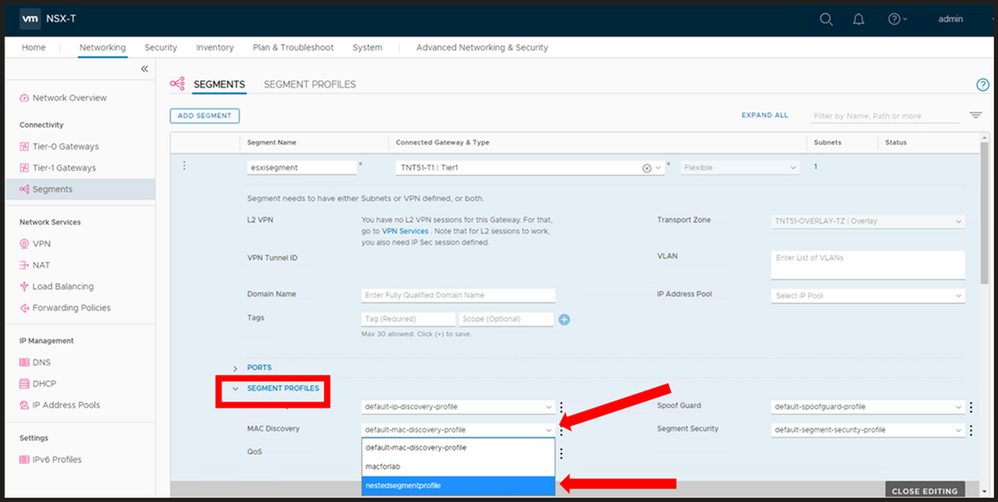
At this point you now have a NSX Segment (subnet) you can start to attach your ESXi hosts vNIC(s) to. Again, you may choose to deploy multiple segments, but this decision will be driven by your needs.
Nested ESXi Disk Requirement
In Azure VMware Solution I have found that you need to make your disk set to IDE. Any virtual hosts which get deployed needs to have their virtual device node changed to IDE.
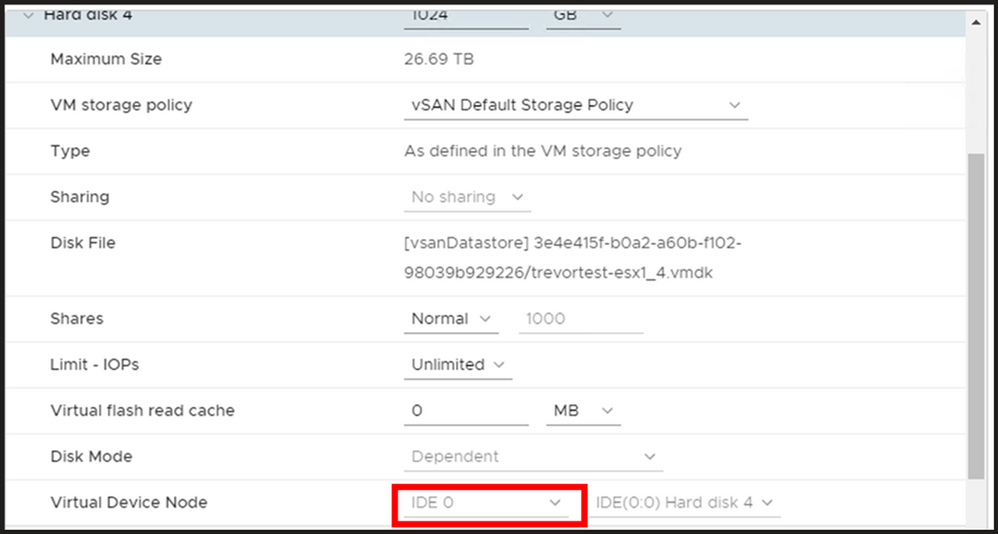
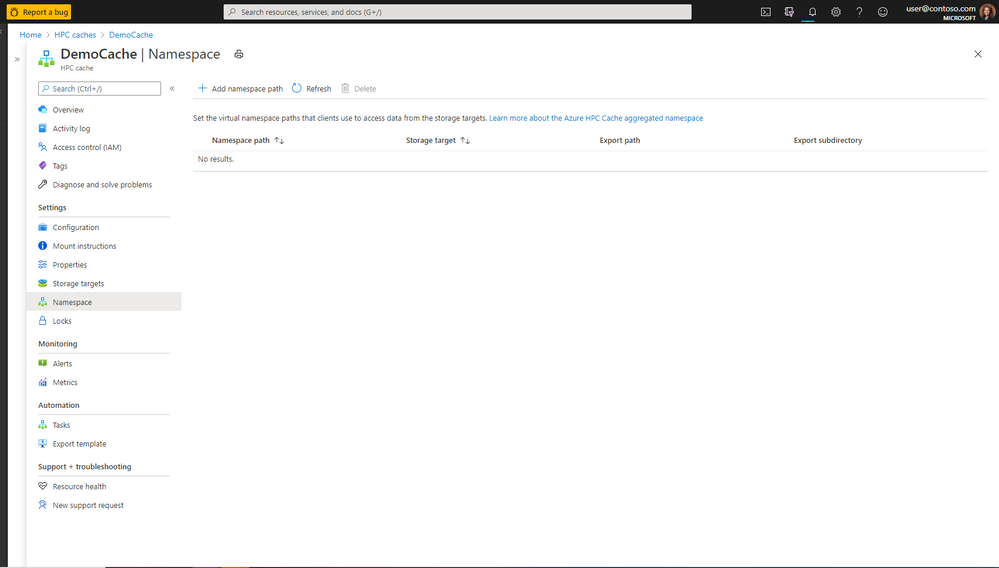
by Contributed | Sep 30, 2020 | Azure, Technology, Uncategorized
This article is contributed. See the original author and article here.
Microsoft Azure HPC Cache services include our unique aggregated namespace that simplifies the management of Azure Blob and/or on-premises storage . The aggregated namespace lets you present your backend storage as a single directory structure. Consolidating under a single virtual namespace helps reduce complexity for clients—they see all storage resources as a single file system.
Just as the virtual namespace simplifies data access, our new HPC Cache namespace page makes it easier than ever to add and manage the client-facing file paths. From a single page, you can now set the client-facing paths for all storage targets, visualize the entire aggregated namespace, and administer changes. By consolidating namespace processes and details, this new page provides a seamless experience without any confusing or time-consuming page toggling.
The screenshots below show the functions and information directly accessible from the new namespace page. (From the Azure.com portal, access the HPC Cache page, then click on the Namespace tab.)

Figure 1. Create, view, and manage an aggregated namespace for multiple backend storage systems—quickly and easily from a single page.
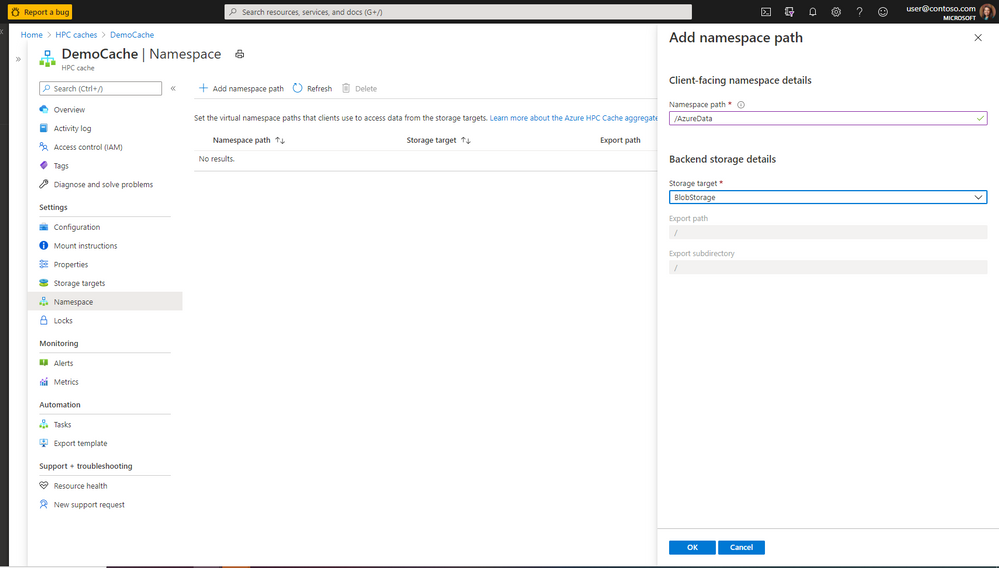
Figure 2. Use the same page to add new client-facing namespace and backend storage details.
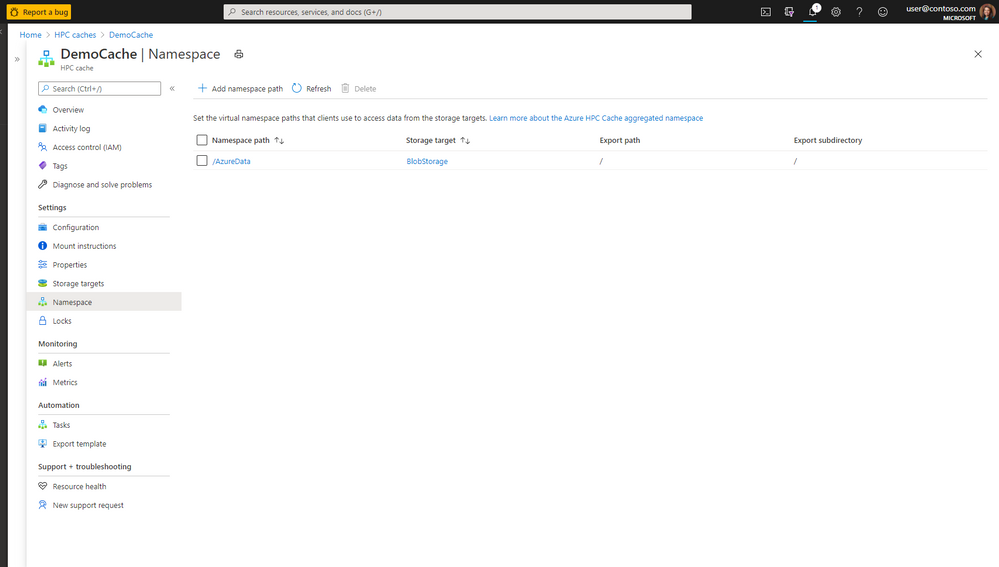
Figure 3. View all the namespace paths and storage-target details without toggling between pages.
If you’d like to see how the layout of the new page works, check out our documentation page to learn how administrators can easily create storage targets, set namespace paths, and manage the virtual namespace.
As always, we appreciate your comments. If you need additional information about Azure HPC Cache services, you can visit our github page or message our team through the tech community. Your feedback helps our team continually enhance HPC Cache services to provide the best-possible user experience and functionality.
Resources
Follow the links below for additional information about Azure HPC Cache and the aggregated namespace functionality.
https://azure.microsoft.com/en-us/services/hpc-cache/
https://docs.microsoft.com/en-us/azure/hpc-cache/hpc-cache-namespace
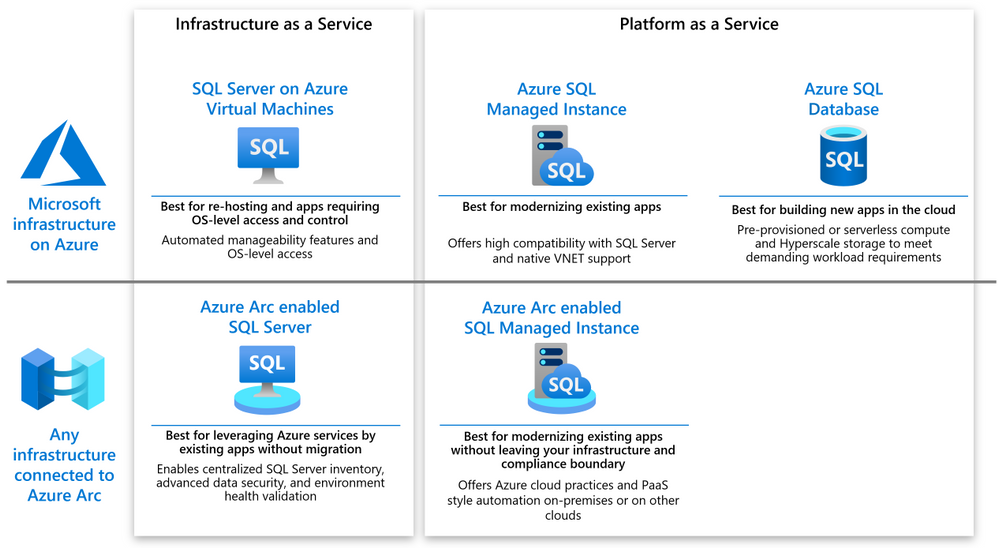
by Contributed | Sep 30, 2020 | Azure, Technology, Uncategorized
This article is contributed. See the original author and article here.
For some years Microsoft Azure has been offering several different deployment and management choices for the SQL Server engine hosted on Azure. With the release of the Azure Arc support for SQL Server, the range of different options has grown even further. This article should help you make sense of the different choices and assist in your decision-making process.
The following diagram shows a high level map of the options available on Azure or via Azure Arc.

As you can see, both on-Azure and off-Azure options offer you a choice between IaaS and PaaS. The IaaS category targets the applications that cannot be changed because of the SQL version dependency, ISV certification or simply because the lack of in-house expertise to modernize. The PaaS category targets the applications that will benefit from modernization by leveraging the latest SQL features, gaining a better SLA and reducing the management complexity.
SQL Server on Azure VM
SQL Server on Azure VM allows you to run SQL Server inside a fully managed virtual machine (VM) in Azure. It is best for lift-and-shift ready applications that would benefit from re-hosting to the cloud without any changes. You will maintain the full administrative control over the application’s lifecycle, the database engine and the underlying OS. You can choose when to start maintenance/patching, change the recovery model to simple or bulk-logged, pause or start the service when needed, and you can fully customize the SQL Server database engine. This additional control involves the added responsibility to manage the virtual machine.
Azure Arc enabled SQL Server
Azure Arc enabled SQL Server (preview) is designed for the SQL Servers running in your own infrastructure or hosted on another public cloud. It allows you to connect the SQL Servers to Azure and leverage the Azure services for the benefit of these applications. The connection and registration with Azure does not impact the SQL Server itself, does not require any data migration and causes no downtime. At present, it offers the following benefits:
- You can manage your entire global inventory of the SQL Servers using Azure Portal as a central management dashboard.
- You can better protect the applications using the advanced security services from Azure Security Center and Azure Sentinel.
- You can regularly validate the health of your SQL Server environment using the On-demand SQL Assessment service, remediate risks and improve performance.
Azure SQL Database
Azure SQL Database is a relational database-as-a-service (DBaaS) hosted in Azure. It is optimized for building modern cloud applications using a fully managed SQL Server database engine, based on the same relational database engine found in the latest stable Enterprise Edition of SQL Server. SQL Database has two deployment options built on standardized hardware and software that is owned, hosted, and maintained by Microsoft.
Unlike SQL Server, it offers limited control over the database engine and the underlying OS, and is optimized for automatic management of the scale up or out operations based on the current demand and bills for the resource consumption on a pay-as-you-go basis. SQL Database has some additional features that are not available in SQL Server, such as built-in high availability, intelligence, and management.
Azure SQL Database offers the following deployment options:
- As a single database with its own set of resources managed via a logical SQL server. A single database is similar to a contained database in SQL Server. This option is optimized for modern cloud-born applications that require a fixed set of compute and storage resources. Hyperscale and serverless options are available.
- An elastic pool, which is a collection of databases with a shared set of resources managed via a logical SQL server. Single databases can be moved into and out of an elastic pool. This option is optimized for modern cloud-born applications using the multi-tenant SaaS application pattern. Elastic pools provide a cost-effective solution for managing the performance of multiple databases that have variable usage patterns.
Azure SQL Managed Instance
Azure SQL Managed Instance is designed for new applications or existing on-premises applications that want migrate to the cloud with minimal changes to use the latest stable SQL Server features. This option provides all of the PaaS benefits of Azure SQL Database but adds capabilities such as native virtual network and near 100% compatibility with on-premises SQL Server. Instances of SQL Managed Instance provide full access to the database engine and feature compatibility for migrating SQL Servers but do not offer admin access to the underlying OS. Azure SQL Managed Instance offers a 99.99% availability SLA.
Azure Arc enabled SQL Managed Instance
Azure Arc enabled SQL Managed Instance is designed to provide the existing SQL server applications an option to migrate to the latest version of the SQL Server engine and gain the PaaS style built in management capabilities without moving outside of the existing infrastructure. The latter allows the customers to maintain the data sovereignty and meet other compliance criteria. This is achieved by leveraging the Kubernetes platform with Azure data services, which can be deployed on any infrastructure.
At present, it offers the following benefits:
- You can easily create, remove, scale up or scale down a SQL Managed Instance within minutes.
- You can setup periodic usage data uploads to ensure that Azure bills you monthly for the SQL Server license based on the actual usage of the managed instances (pay-as-you-go). You can do it even you are running the applications in an air-gapped environment.
- You can leverage the capabilities of latest version of SQL Server that is automatically kept up to date by the platform. No need to manage upgrades, updates or patches.
- Built-in management services for monitoring, backup/restore, and high availability.
Next steps
For related material, see the following articles:
by Contributed | Sep 30, 2020 | Azure, Technology, Uncategorized
This article is contributed. See the original author and article here.
AstraZeneca, which is headquartered in Cambridge, UK, has a broad portfolio of prescription medicines, primarily for the treatment of diseases in Oncology; Cardiovascular, Renal & Metabolism; and Respiratory & Immunology.
“…The vast amount of data our research scientists have access to is exponentially growing each year and maintaining a comprehensive knowledge of all this information is increasingly challenging, ” Gavin Edwards, a Machine Learning Engineer at AstraZeneca wrote.
Edwards is part of AstraZeneca’s Biological Insights Knowledge Graph (BIKG) team. He explains that knowledge graphs are networks of contextualized scientific data such as genes, proteins, diseases, and compounds—and the relationship between them.
As these knowledge graphs grow and become more complex, machine learning gives AstraZeneca’s BIKG team a way to analyze the data within them and find relevant connections more quickly and efficiently.
“We can use this approach to identify, say, the top 10 drug targets our scientists should pursue for a given disease,” Edwards wrote.
Since a great deal of the data used to form knowledge graphs comes in the form of unstructured text, AstraZeneca uses PyTorch’s library of natural language processing (NLP) to define and train models. They use Microsoft’s Azure Machine Learning platform in conjunction with PyTorch to create machine learning models for recommending drug targets.
Learn more about how AstraZeneca is using Microsoft Azure and PyTorch in an effort to accelerate drug discovery.





Recent Comments